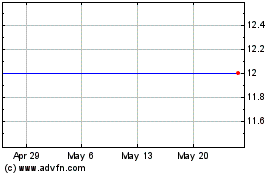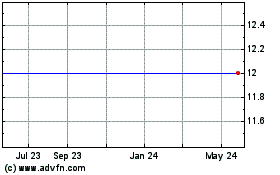Emerging Markets: The Way Forward - Analyst Blog
December 07 2011 - 7:50AM
Zacks
According to Irish orator, philosopher, & politician Edmund
Burke, change is the most powerful law of nature. The winds of
change seem to be sweeping across the pharmaceutical industry as
well.
Until recently, most commercialization efforts were focused on
the U.S. -- the largest pharmaceutical market -- along with Europe
and Japan. However, with factors like pricing pressure in the
European Union (EU) and intensifying generic competition affecting
sales in large pharmaceutical markets, many leading players in the
pharmaceutical space such as Pfizer (PFE),
Bristol - Myers Squibb Company (BMY),
Merck (MRK), Eli Lilly (LLY),
GlaxoSmithKline (GSK), Astra
Zeneca (AZN) and Sanofi-Aventis (SNY),
have shifted their focus on emerging ("pharmerging") markets.
The key emerging markets targeted by big players in the
pharmaceutical space (aka “Big Pharma") include China, Russia,
Brazil, Mexico, Turkey, Korea and India.
Emerging markets represent significant commercial potential
thanks to increased demand for medicines. Factors like increases in
chronic diseases, population growth, government initiatives for
healthcare, increasing use of generics and increasing prosperity
are expected to drive growth in emerging markets.
The US and European markets are turning out to be relatively
less attractive due to the impact of the health care legislation in
the former and austerity measures in the latter.
According to data provided by the IMS Institute, spending on
medicines in emerging markets will double to $285-$315 billion in
the next five years from $151 billion in 2010, driven by strong
economic growth coupled with endeavors of governments to expand
access to healthcare. This will catapult "pharmerging" markets to
the second position by 2015 in terms of spending on medicines.
Generic Threat? Emerging Markets to the
Rescue
Since most of the Big Pharma players are likely to suffer
significant losses in revenues following the genericization of key
products, they are banking on growth in emerging markets to
mitigate their losses.
With blockbuster drugs such as Pfizer’s Lipitor
(anti-cholesterol) and Eli Lilly’s Zyprexa (schizophrenia and
bipolar disorder) already off-patent in the US and other
blockbuster drugs such as Bristol-Myers/Sanofi’s blood thinner
Plavix, Forest Laboratories’ (FRX) Lexapro
(anti-depressant) expected to follow suit shortly, sales of branded
drugs in the US and EU are likely to suffer significantly in the
coming years. Consequently, growth in emerging markets could help
stabilize the core business during the industry's patent cliff in
the 2010-15 period.
M&A Activity: Emerging Markets in Focus
With sales in the once dominant markets (US and EU) being
impacted by the headwinds mentioned above, many leading players in
the pharma space are increasing their exposure to emerging markets
through mergers and acquisitions (M&A). By doing so, the
companies are gaining access to low-cost manufacturing. Moreover,
the Chinese, Indian, Brazilian, Eastern European and Russian
markets are growing faster than the more mature US and European
ones.
For example, pharma giant Abbott Laboratories
(ABT) is leaving no stone unturned to expand its overall presence
in emerging markets. Through the 2010 acquisitions of the
pharmaceutical business Solvay Pharma (which has a strong presence
in emerging markets) and Piramal Healthcare Solutions coupled with
the licensing agreement with Zydus Cadila, Abbott has taken
concrete steps to expand its presence in several highly populated,
fast-growing emerging markets.
With the generic market going strong and likely to expand
further thanks to patent expiries of blockbuster drugs, leading
players such as Mylan Inc. (MYL) (Indian
subsidiary Mylan Laboratories) and Novartis (NVS)
(generic arm Sandoz having a strong presence in emerging markets
like India) have been trying to make further inroads in the
emerging markets.
The dominance of the generic market can be gauged from the data
provided by the IMS Institute. The data reveals that market share
for branded drugs will continue declining over the next five years.
Branded drugs' market share, which declined from 70% in 2005 to 64%
in 2010, is expected to decline to 53% by 2015, with generics
accounting for a significant part of pharma spending.
Conclusion
In view of the above facts, we can safely say that the future of
the pharmaceutical business is tied to emerging markets. In the
face of increasing generic competition and other headwinds, the big
names in the pharmaceutical world are turning to emerging markets
to sustain growth and profitability.
ABBOTT LABS (ABT): Free Stock Analysis Report
ASTRAZENECA PLC (AZN): Free Stock Analysis Report
BRISTOL-MYERS (BMY): Free Stock Analysis Report
FOREST LABS A (FRX): Free Stock Analysis Report
GLAXOSMITHKLINE (GSK): Free Stock Analysis Report
LILLY ELI & CO (LLY): Free Stock Analysis Report
MERCK & CO INC (MRK): Free Stock Analysis Report
MYLAN INC (MYL): Free Stock Analysis Report
NOVARTIS AG-ADR (NVS): Free Stock Analysis Report
PFIZER INC (PFE): Free Stock Analysis Report
SANOFI-AVENTIS (SNY): Free Stock Analysis Report
Zacks Investment Research
Forest Road Acquisition (NYSE:FRX)
Historical Stock Chart
From Jun 2024 to Jul 2024

Forest Road Acquisition (NYSE:FRX)
Historical Stock Chart
From Jul 2023 to Jul 2024
